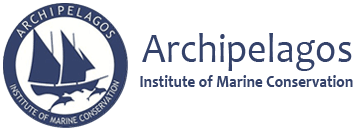Meek, S., Ward, E., Sargeant, S., Tsimpidis, T., Miliou, A., Newton, L., Willey, N., Steer, M. Development of an efficient and cost effective tool for mapping Posidonia oceanica in the Eastern Aegean, Greece. 12th Panhellenic Symposium of Oceanography & Fisheries 2018.
Introduction/Aim:
The declining endemic Mediterranean seagrass, Posidonia oceanica, is of great ecological and economic importance to coastal regions (Fourqurean et al, 2012, Champagne et al., 2015). It’s large below-ground biomass of rhizome mattes allow long term accumulation of carbon and it’s estimated to store the most carbon of all seagrass species (Fourqurean et al., 2012). Furthermore P. oceanica contributes up to €2.2 billion/yr, from ecosystem services to the European economy (Marba et al., 2014, Waycott et al., 2009). P. oceanica meadows are declining at almost twice that of global seagrass species, due to anthropogenic disturbances (Marba et al., 2014, Waycott et al., 2009). Despite the current fragility of P. oceanica meadows, there are still vast portions of coastline in the eastern Mediterranean which remain unmapped (Marba et al., 2014, Telesca et al. 2015). One of the least studied countries is Greece where just a fraction (only 8% of the coastline) of the islands have been mapped (Telesca et al. 2015). Without information on the status of beds in the eastern Mediterranean, EU legislation to protect them is impossible to enforce efficiently. There is an urgent need for widespread mapping of P. oceanica, particularly in the eastern Mediterranean, so an efficient and low-cost method to map seagrass would be very beneficial.


